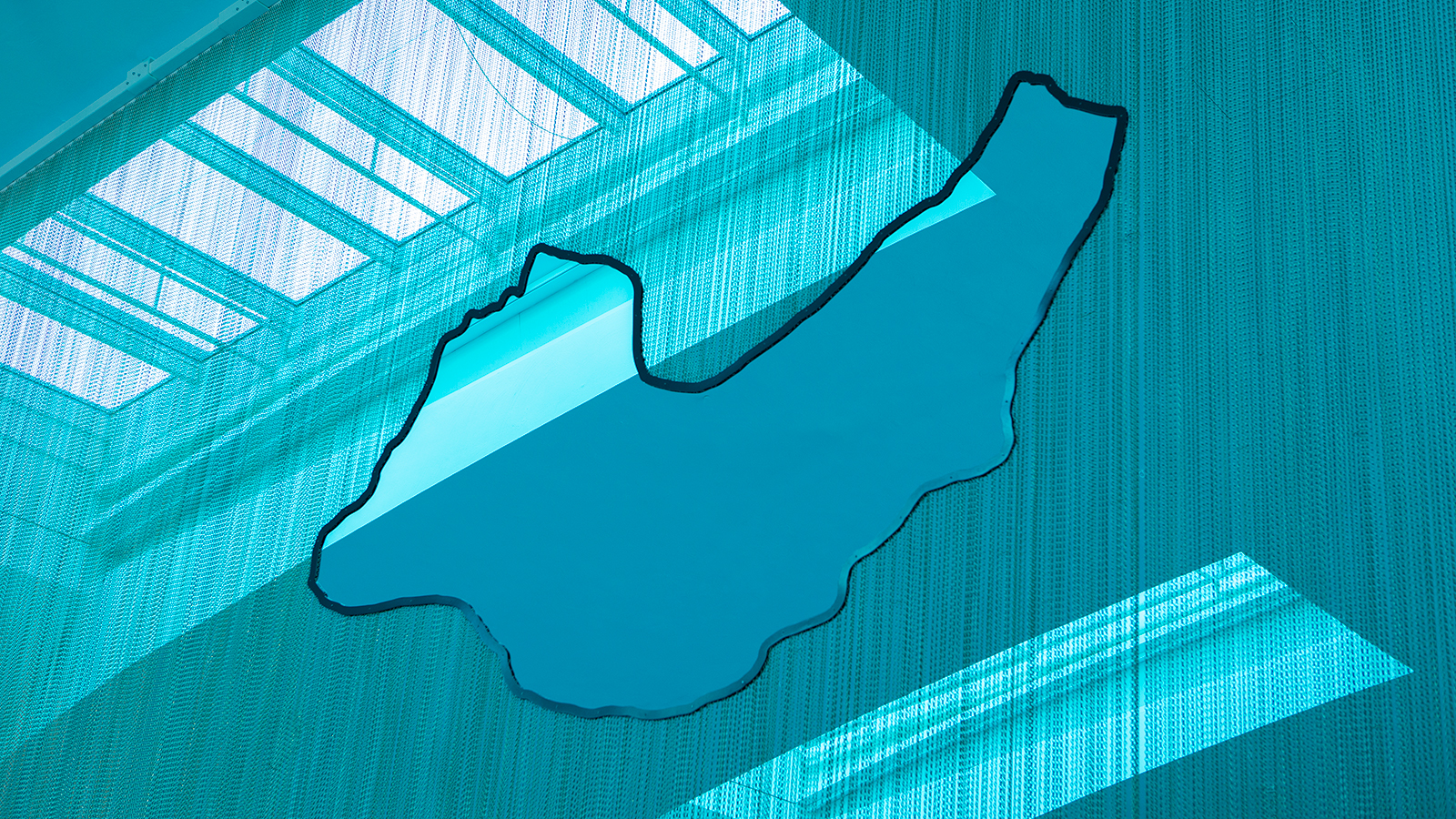
Near the start of Daniel Steegmann Mangrané’s new show, ‘A Leaf Shapes the Eye’, a variety of small, strange objects are scattered across a white table: hybrid cigarette packaging formed of two hexagonally cut packs; shredded strips of magazine bundled like a plant; seeds and other undeclared natural spherical forms cut with geometric patterns; leaves with laser-cut circles scarring their surface; and several contorted and twisted twigs. It is an eclectic mix of found and manipulated objects displayed as an artistic space of exploration, with ideas transposed from studio to gallery.
Steegmann Mangrané’s show is a 25-year survey of the Spanish artist’s practice spread over two floors of Kiasma, the Finnish national gallery of contemporary art. He is an artist interested in extracting or revealing the uncanny from objects and places, not only to create curious aesthetic form but to deeply penetrate ideas of nature. Those contorted twigs on the table do just this, each clinically split in half along the stem before the artist uses wire to reconstruct it, a void separating the slivers.
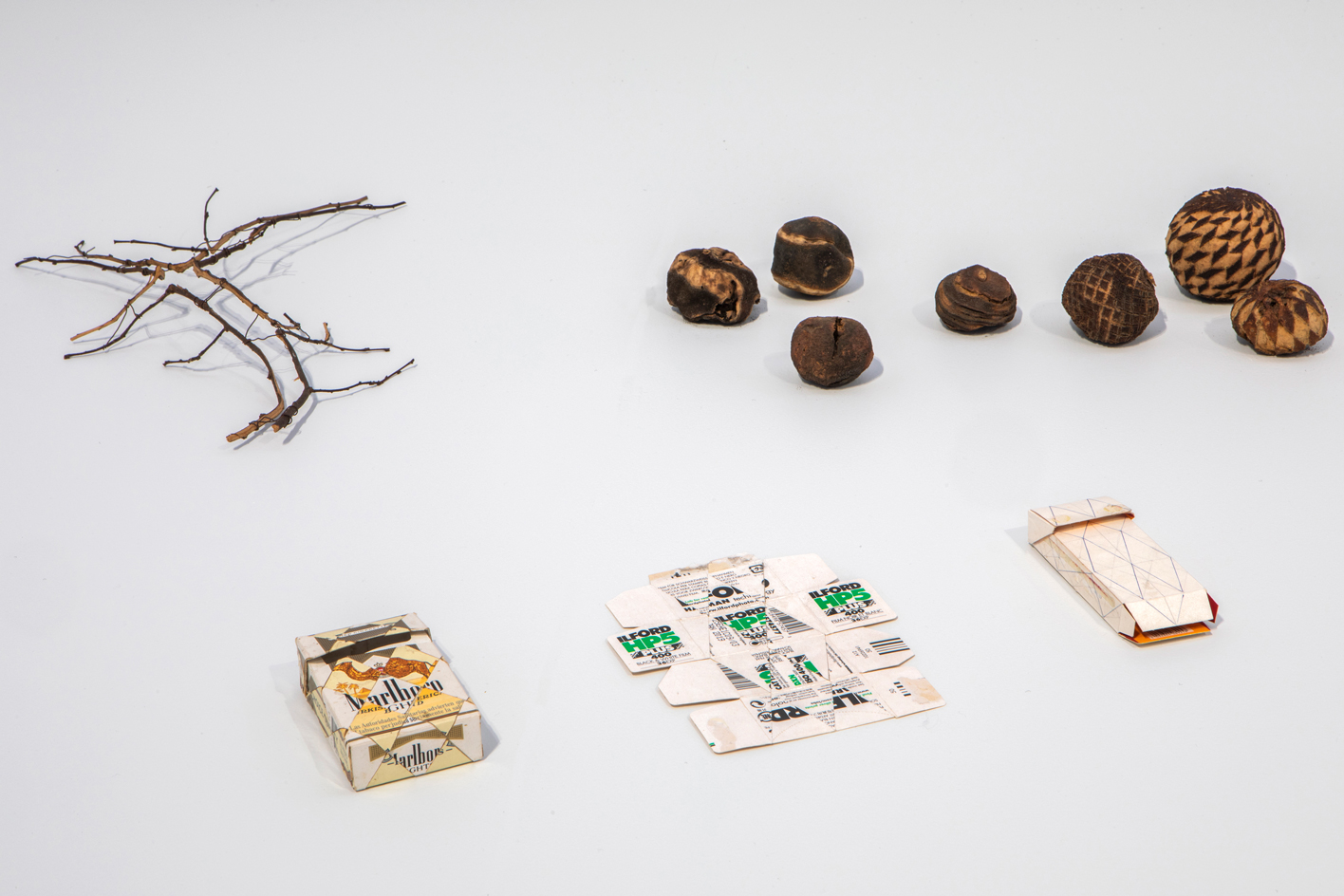
‘One of the key questions of the exhibition is the blurring of the boundaries between culture and nature that Western thinking has established as opposition,’ explains João Laia, chief curator of temporary exhibitions at Kiasma. The void Steegmann Mangrané has inserted into the twigs exemplifies this: a familiar, even mundane, natural object, now transformed through a subtle cultural act, creating space to consider its relationship to the human.
Elsewhere, the eyes of feral dogs which reside in a brutalist Dhaka building are now attached to trees within the Brazilian Mata Atlântica rainforest, seemingly freeing the animals’ spirits not only into nature 14,000km away but into the very trunk of a new living being. In the same rainforest, a 16mm film follows a perfectly geometric line through the chaos of nature. It creates a sublime capturing of place, but one that is also sinister and unnerving in its smooth, clinical gesture so at odds with the wilderness it surveys.
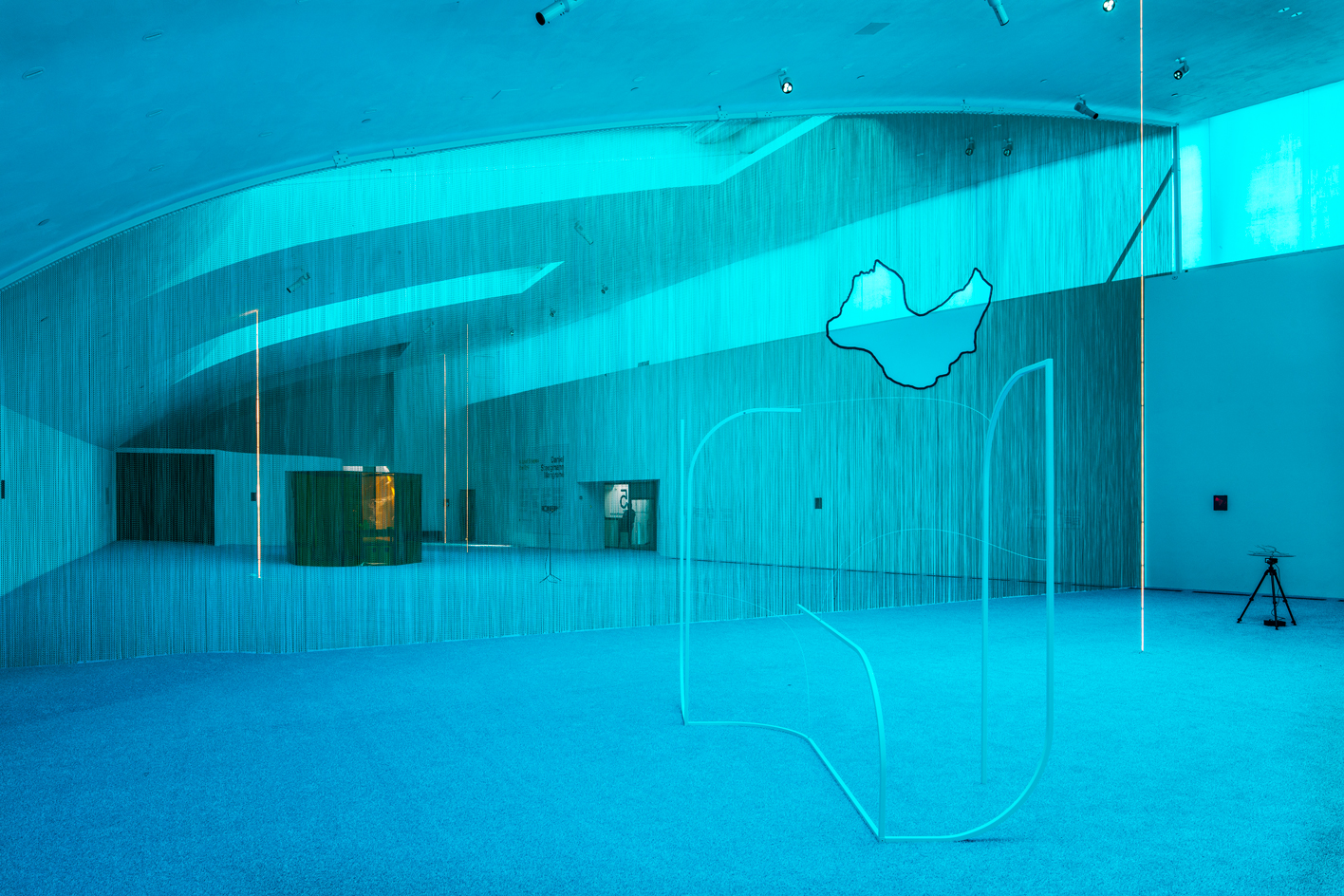
This half of the exhibition is full of discrete experiments presented in a traditional white wall hang. There are montaged images, geometric colour experiments, and a film of stick insects living within a world of twigs and geometric construction, the camera’s shifting focus softening the distinction between each. A slideshow of 54 photographs presents Calafet, the eastern Catalonian landscape of Steegmann Mangrané’s childhood, showing a place of constant destruction and reformation through quarries, construction, and movement.
It’s a landscape which comes to mind in the second, and distinctly different, half of the exhibition. Having explored the artistic ingredients, tools, and modes of perception utilised by Steegmann Mangrané, the visitor ascends a ramp and opens a door to find themselves in a kind of manmade Calafet–but one transmogrified, belying expectation and geometry. With windows covered in blue film, Nordic spring light floods across synthetic blue grass laid to an irregular topology. The Stephen Holl-designed gallery becomes a space of dislocation, the slopes of the artificial lawn forcing the visitor into self-awareness of body and gravity.
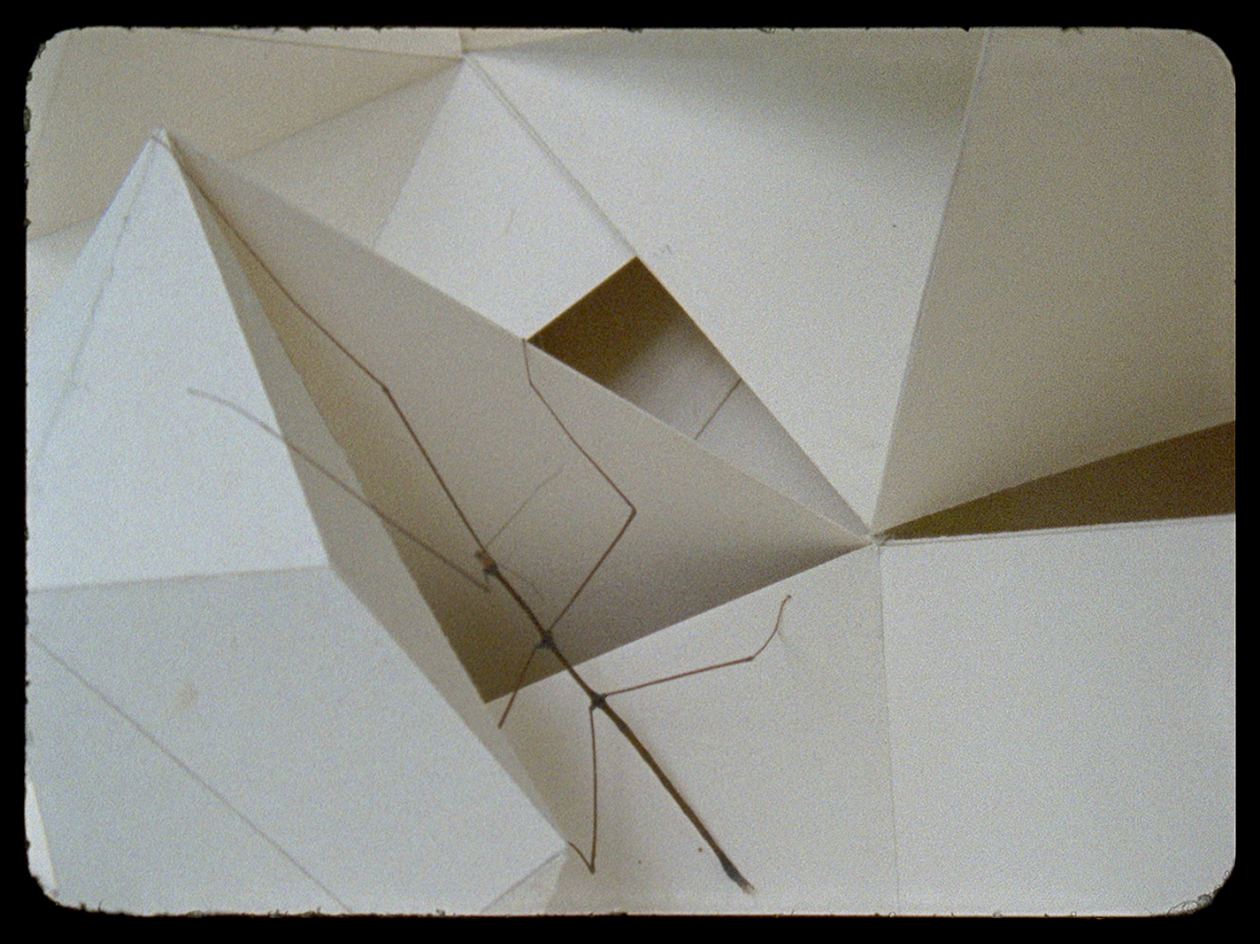
‘Things start to dissolve the traditional opposition between mind and body, or geometric and organic,’ the artist says of the space interrupted by five taut vertical lights flashing, flickering, and flowing in response to the external climate and internal activity. Elements seen across the previous floor recur but extracted from a traditional hang into this otherworld: a split twig sits on a rotating mirrored circle and a leaf stands proud with a single beam of light singing through its perfect circles. On the floor, a cellular-pattern jigsaw of 200-million-year-old Italian marble is rearranged, questioning the division between natural and manmade, on the walls holograms give a sci-fi glow to elementary nature.
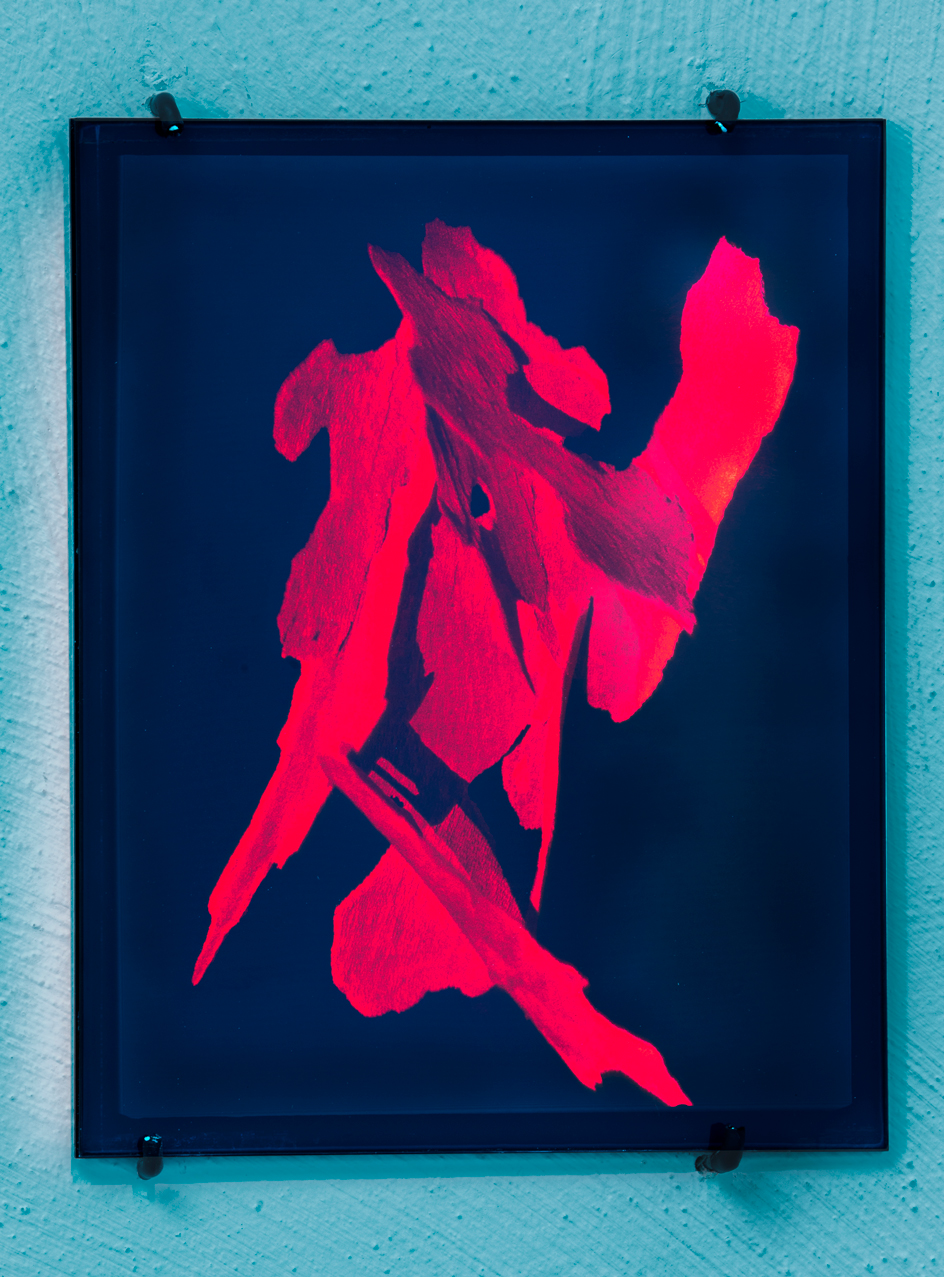
This is a search for the cosmos within the fundamental, and wrapping it all is an otherworldly sound with echoes of distant space and ancient times. In fact, it is a loop recording of flautist Joana Saraiva, a musician Steegmann Mangrané presented with recordings of the intense noise of an under-construction oil rig which she then transposed into the haunting soundscape. ‘Most of the time she was deaf to what she was playing, the sound she was listening to was so loud she couldn’t hear what she was playing, she was interpreting through the vibration of her chest, lips, and fingers,’ the artist says of the collaboration which returned a human scale to an immense machinery created to extract nature. On the far side of a room-dividing chainlink curtain–which requires the visitor to cut through as the linear film sliced the rainforest–a twisting steel sculpture stands. It shadows the movements construction workers repeated and repeated in constructing the rig, fixing their choreography into a delicate form.
Steegmann Mangrané’s manipulations and explorations of nature, and humanity’s entanglement with it as observer and user, raises questions beyond a subject/viewer dialectic, encouraging us to see ourselves of nature, not from it. ‘Everything has a potentiality of being a subject, everything has its own point of view, everything should be respected, and everything should be treated with the same way we should treat our peers,’ the artist says, and at a time when nature from rivers to mountains are being afforded human and legal rights to fight anthropogenic destruction, it is a pertinent proposition.
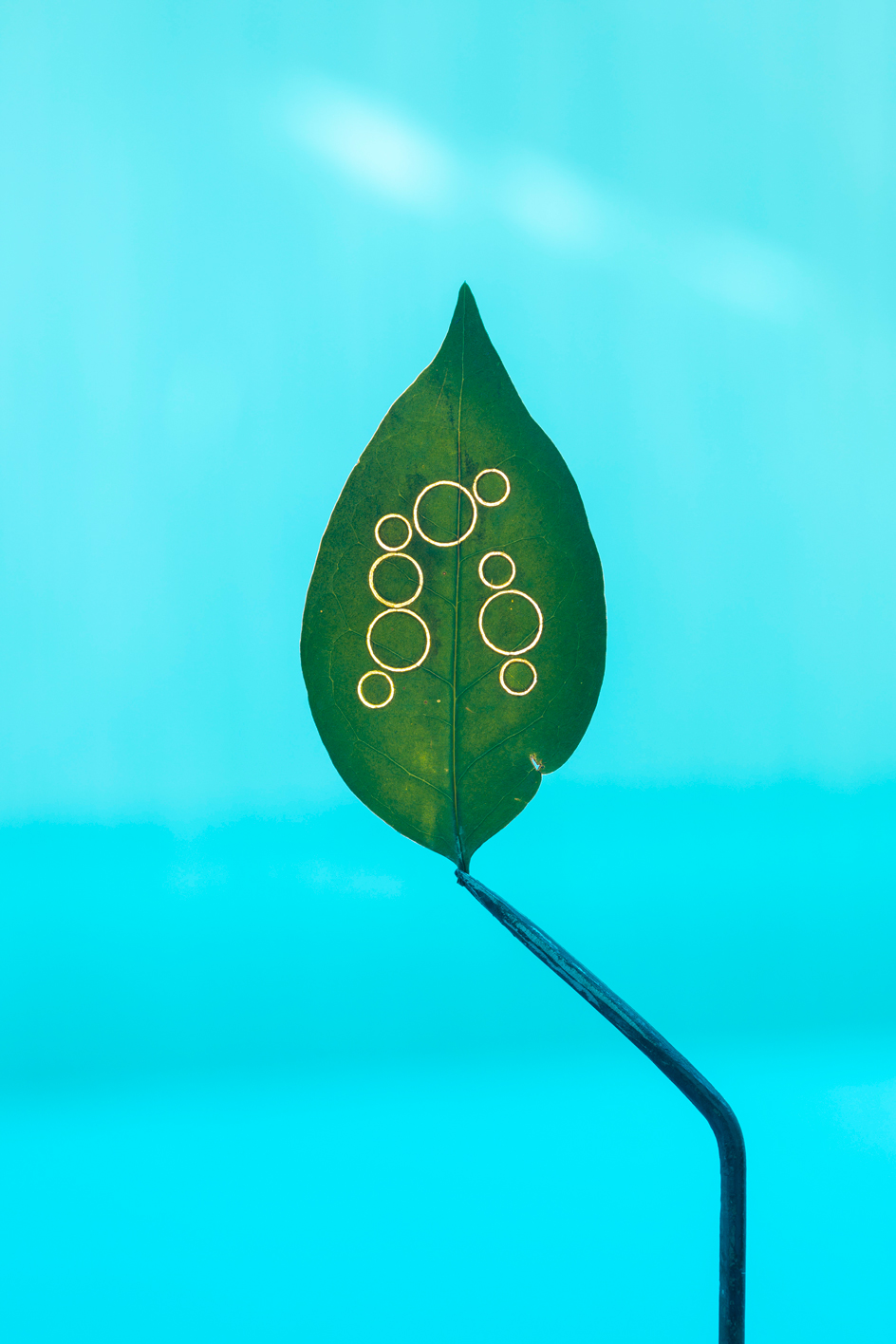
Daniel Steegmann Mangrané, 'A Leaf Shapes the Eye', until 10 September 2023, Museum of Contemporary Art Kiasma. kiasma.fi







